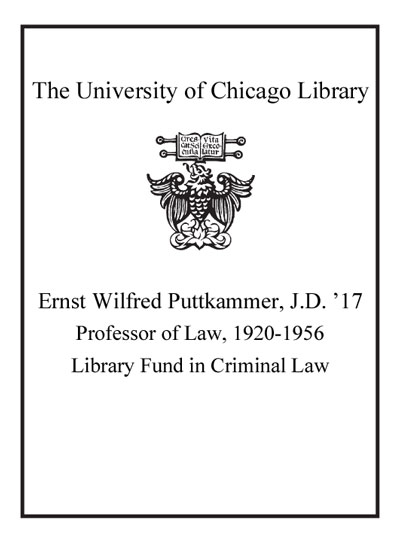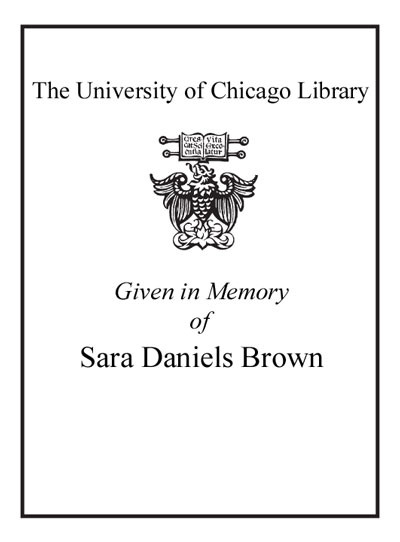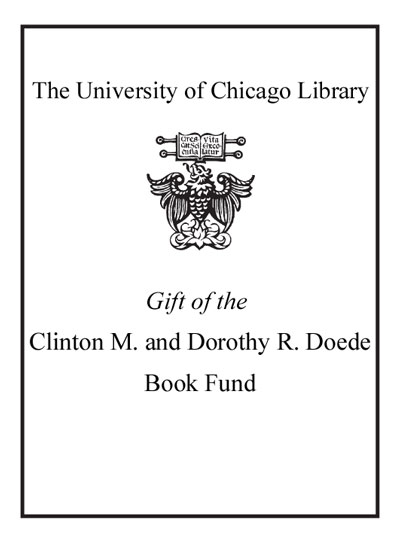Review by Booklist Review
Courage, a word debased by promiscuous use today, used to be reserved for deeds that risked death. And courage is no longer admired as an unalloyed virtue: some hate it for its martial connotations. That's just one of the ambiguities encountered in describing courage, which Miller here intelligently attempts. He displays an exquisite feel for the warring emotions overlain by courage, such as cowardice, fear, and shame, and for the situations in which courage is displayed. Its stage is primarily combat, accounts of which, from Thucydides to Tim O'Brien, Miller examines with astuteness and sensibility to layered meanings. One war story he dissects concerns the Spartan Aristodemus, who shirked annihilation at Thermopylae; to redeem himself, Aristodemus went berserk against the Persians in the next battle. He did not die as he intended, however, and his countrymen continued to despise him. Instances like this, Miller notes, reveal courage has political as well as psychological and moral components, and the more deeply examined, the more complicated this viscerally recognizable but undefinable virtue becomes. An accessible intellectual exploration. --Gilbert Taylor
From Booklist, Copyright (c) American Library Association. Used with permission.
Review by Publisher's Weekly Review
Originally conceived as a meditation on cowardice in an extension of his "misanthropic series" (The Anatomy of Disgust; Humiliation), Miller's volume eventually gave way to the more compelling qualities of that "glorious phantom," courage. Unfortunately, fear remains the heart of the work. Miller seems unable to see courage positively; rather he views it as a negative state in which people merely lack a motivating fear. His language repeatedly plays on self-doubt. Discussing military duty, he confesses, as though driven by personal demons, "those who were given these orders and duties, with very few exceptions did not refuse them. The rate of compliance flabbergasts us, because we cannot quite trust that we would not have collapsed sniveling or cowering." The emphasis on fear, especially physical fear of death or injury in combat, leaves Miller nonplussed by non-martial forms of courage that have less to do with fear than sacrifice, determination and will: nurses in war zones and women on the frontier are dispensed with in two sentences. The convoluted structure also leads to some strange definitions of courage: "among the Cossacks... courage's substance may have been nine parts pitilessness and cruelty." As a law professor, Miller is well positioned to discuss social contracts and how people resolve conflicts between the good of society and self-preservation. Instead, he explores such trivial (or uncontroversial) issues as whether a man suffering a heart attack in a cafe should bother other patrons to get medical help. Miller admits at the outset that he cannot pin down the nature of courage; his failure to explore its deep moral and ethical issues will disappoint serious readers. (Sept.) (c) Copyright PWxyz, LLC. All rights reserved
(c) Copyright PWxyz, LLC. All rights reserved
Review by Library Journal Review
In this fourth solo effort, Miller (The Anatomy of Disgust) presents a provocative analysis of the fine line between courage and cowardice. Using historical example, literature, and the memoirs of soldiers, sailors, and marines, Miller has put together a witty, articulate, and thoughtful study of why some fight and some run. From ancient Greeks and Romans to the 20th-century warrior, Miller examines the social, cultural, and psychological factors that define courage and cowardice. Through the occasional psychobabble, Miller does offer some interesting insights into this unsolvable psychological mystery. He determines that courage is what society perceives it to be, whether moral or physical. Instinct, luck, training, peer pressure, opportunity, skill, shame, and the desire for glory are all factors that can influence the actions of a hero or a coward. Most interesting is his surprising discussion of how and why cowardice is a crime in the military society. This excellent study is rich with examples of those who stood or ran in battle and how they were judged by their fellow soldiers; it would be a perfect companion to John Keegan's superb book, The Face of Battle (1983). Recommended for all public libraries.-Col. William D. Bushnell, USMC, (ret.), Sebascodegan Island, ME (c) Copyright 2010. Library Journals LLC, a wholly owned subsidiary of Media Source, Inc. No redistribution permitted.
(c) Copyright Library Journals LLC, a wholly owned subsidiary of Media Source, Inc. No redistribution permitted.
Review by Kirkus Book Review
Michigan law professor Miller (The Anatomy of Disgust, 1997, etc.) continues his Sue Grafton-like progress through the catalogue of human attributes. Acknowledging that "courage is no easy virtue to get a grip on," Miller nonetheless charges fearlessly ahead in this entertaining, troubling, and fluid meditation on what he calls "the most frequent theme of all world literature." Miller focuses principally on the military variety, for "no theory of courage can ignore war or the experience of fighting, without being hollow at its core." Miller analyzes the memoirs of soldiers, the musings of martial philosophers, and even war poems and novels to illuminate his themes. We hear a variety of opinions, from philosophers Plato, Socrates (Miller describes his little-known military exploits), and Aristotle; from Icelandic sagas (which, Miller claims, contain only 128 similes throughout); from such Civil War authors and soldiers as Abner Small and U.S. Grant; and from Vietnam veterans Tim O'Brien and Philip Caputo. Mike Tyson, Kurt Vonnegut Jr., and Edith Wharton are among the many who make cameos. Throughout, the author continually admits that his subject is daunting in its complexity; sometimes he states this explicitly, but more often he reveals it stylistically in his tendency to ask questions rather than make statements (e.g., "Could it be that the human capacity for courage is ineffably tied to the limits of our bodily powers?"). Miller defends less secure ground (as he admits himself) when he writes about the courage of women and about moral (rather than physical) courage: he concludes his comments about women in the military by declaring that they "will have made it" when they can be court-martialed "for cowardly conduct," and he avers (a bit patronizingly) that moral courage is only "nearly as sublime" as "physical bravery." Well-researched and gracefully written, but ultimately both tenuous and tentative. Copyright ©Kirkus Reviews, used with permission.
Copyright (c) Kirkus Reviews, used with permission.
Review by Booklist Review
Review by Publisher's Weekly Review
Review by Library Journal Review
Review by Kirkus Book Review



